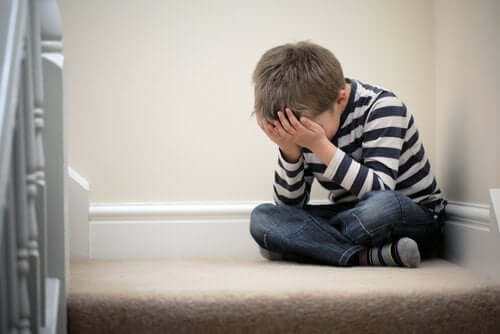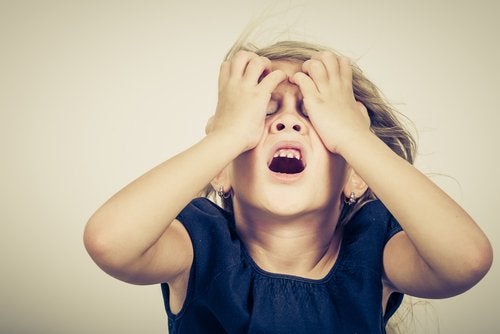Coping Cat: Treatment for Child Anxiety


Written and verified by the psychologist Elena Sanz Martín
Anxiety is one of the most prevalent mental health problems among the population in recent years. The difficulty of facing its symptoms increases when it occurs in children. With that in mind, today we’re going to talk about one of the most complete and effective treatments for child anxiety: The Coping Cat program.
Children don’t yet possess the cognitive abilities necessary to understand the manifestations of anxiety they’re presenting. Nor have they developed the skills to confront and manage it. As a result, they may feel confused, different and inadequate.
Coping Cat addresses all of these difficulties from a child’s perspective that little ones can understand.
What is Coping Cat?
Coping cat is a cognitive-behavioral program focused on the treatment of various anxiety problems in children between the ages of 7 and 13. With the help of a manual and using language adapted to children, it addresses the symptoms of different anxiety disorders. For example, separation anxiety, social anxiety, and generalized anxiety.

The main objectives of the program are to:
- Help children recognize their anxiety symptoms in all their aspects (thoughts, feelings, and body sensations)
- Identify which situations cause them anxiety
- Be aware of how they act in these situations and assess whether that way of behaving helps or hurts them
- Develop strategies for coping and managing anxiety
- Learn to evaluate their own behavior and reinforce themselves when appropriate
In short, it’s about providing the child with information about what’s happening to them and showing them that their behaviors can make anxiety worse or better. In this way, Coping Cat empowers them and invites them to take charge, giving them the necessary guidelines for action.
How does it work?
Throughout the manual, various techniques of cognitive-behavioral psychotherapy are put into practice. These have all proven to be effective in addressing anxiety.
- Relaxation techniques: To achieve control over anxiety levels and to be able to reduce them. It’s essential that the child be calm when facing the situations they fear. Therefore, training them in a relaxation technique will help them manage their own activation.
- Modeling: The therapist shows the child how to put into practice the skills that they’re acquiring. The professional models and represents how to act in the feared situation, so that the child can learn by observation.
- Role-playing: Before confronting real life, the child and the therapist will carry out role-plays. This gives the child the opportunity to practice their skills in a safe environment.
- Exposure: The child gradually faces situations that cause anxiety. They do this by acquiring sufficient tools to manage the discomfort and by learning how to act in them. When they manage to stay in a situation until the anxiety subsides significantly, they can move on to the next one.
- Self-instruction: The child is trained to address messages of support and guidance to themselves when they’re going to face the situation they fear.
- Reinforcement: Every step the child takes in the direction of overcoming her fears will receive reinforcement and praise.

Coping Cat step by step
The main character of this booklet, a cat, introduces himself to the child on the first page and tells him his story. He explains that he was adopted and that when he arrived at his new home, he was so scared that he hid under the sofa. However, now he’s learned to manage it.
Thus, using this friendly narrator, the manual continues with two parts. The first focuses on training the child in coping skills and the second helps them practice these skills in real life. The complete program consists of 16 sessions through which the child learns to understand their anxiety and to cope with it.
This is a very complete training that addresses all dimensions of anxiety and provides all necessary knowledge, tools and guidelines. But, in addition, it adapts completely to children, both in structure and language.
In this way, it makes the treatment far from traumatic for the child. Rather, treatment is fun and exciting, and the little one finishes the program feeling confident of their own abilities.
Anxiety is one of the most prevalent mental health problems among the population in recent years. The difficulty of facing its symptoms increases when it occurs in children. With that in mind, today we’re going to talk about one of the most complete and effective treatments for child anxiety: The Coping Cat program.
Children don’t yet possess the cognitive abilities necessary to understand the manifestations of anxiety they’re presenting. Nor have they developed the skills to confront and manage it. As a result, they may feel confused, different and inadequate.
Coping Cat addresses all of these difficulties from a child’s perspective that little ones can understand.
What is Coping Cat?
Coping cat is a cognitive-behavioral program focused on the treatment of various anxiety problems in children between the ages of 7 and 13. With the help of a manual and using language adapted to children, it addresses the symptoms of different anxiety disorders. For example, separation anxiety, social anxiety, and generalized anxiety.

The main objectives of the program are to:
- Help children recognize their anxiety symptoms in all their aspects (thoughts, feelings, and body sensations)
- Identify which situations cause them anxiety
- Be aware of how they act in these situations and assess whether that way of behaving helps or hurts them
- Develop strategies for coping and managing anxiety
- Learn to evaluate their own behavior and reinforce themselves when appropriate
In short, it’s about providing the child with information about what’s happening to them and showing them that their behaviors can make anxiety worse or better. In this way, Coping Cat empowers them and invites them to take charge, giving them the necessary guidelines for action.
How does it work?
Throughout the manual, various techniques of cognitive-behavioral psychotherapy are put into practice. These have all proven to be effective in addressing anxiety.
- Relaxation techniques: To achieve control over anxiety levels and to be able to reduce them. It’s essential that the child be calm when facing the situations they fear. Therefore, training them in a relaxation technique will help them manage their own activation.
- Modeling: The therapist shows the child how to put into practice the skills that they’re acquiring. The professional models and represents how to act in the feared situation, so that the child can learn by observation.
- Role-playing: Before confronting real life, the child and the therapist will carry out role-plays. This gives the child the opportunity to practice their skills in a safe environment.
- Exposure: The child gradually faces situations that cause anxiety. They do this by acquiring sufficient tools to manage the discomfort and by learning how to act in them. When they manage to stay in a situation until the anxiety subsides significantly, they can move on to the next one.
- Self-instruction: The child is trained to address messages of support and guidance to themselves when they’re going to face the situation they fear.
- Reinforcement: Every step the child takes in the direction of overcoming her fears will receive reinforcement and praise.

Coping Cat step by step
The main character of this booklet, a cat, introduces himself to the child on the first page and tells him his story. He explains that he was adopted and that when he arrived at his new home, he was so scared that he hid under the sofa. However, now he’s learned to manage it.
Thus, using this friendly narrator, the manual continues with two parts. The first focuses on training the child in coping skills and the second helps them practice these skills in real life. The complete program consists of 16 sessions through which the child learns to understand their anxiety and to cope with it.
This is a very complete training that addresses all dimensions of anxiety and provides all necessary knowledge, tools and guidelines. But, in addition, it adapts completely to children, both in structure and language.
In this way, it makes the treatment far from traumatic for the child. Rather, treatment is fun and exciting, and the little one finishes the program feeling confident of their own abilities.
All cited sources were thoroughly reviewed by our team to ensure their quality, reliability, currency, and validity. The bibliography of this article was considered reliable and of academic or scientific accuracy.
- Kendall, P. C., & Hedtke, K. A. (2006). Cognitive-behavioral therapy for anxious children: Therapist manual. Workbook Publishing.
- Beidas, R. S., Benjamin, C. L., Puleo, C. M., Edmunds, J. M., & Kendall, P. C. (2010). Flexible applications of the coping cat program for anxious youth. Cognitive and behavioral practice, 17(2), 142-153.
- Podell, J. L., Mychailyszyn, M., Edmunds, J., Puleo, C. M., & Kendall, P. C. (2010). The Coping Cat Program for anxious youth: The FEAR plan comes to life. Cognitive and Behavioral Practice, 17(2), 132-141.
This text is provided for informational purposes only and does not replace consultation with a professional. If in doubt, consult your specialist.








